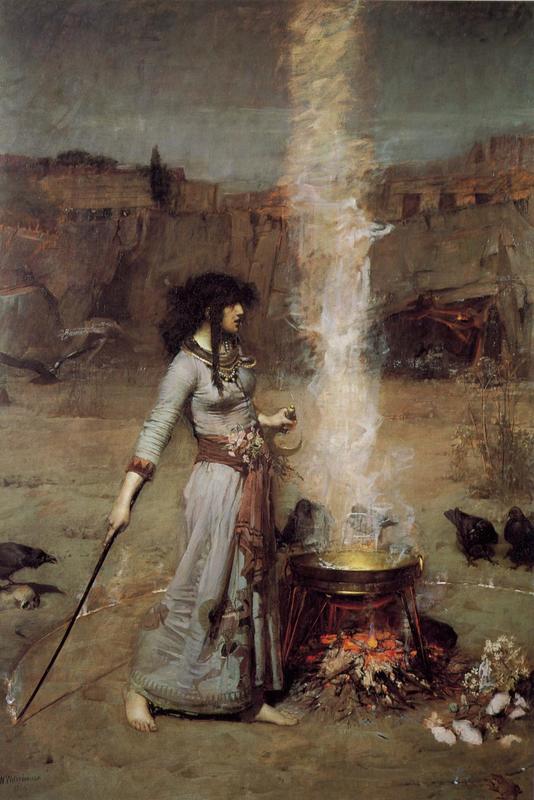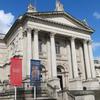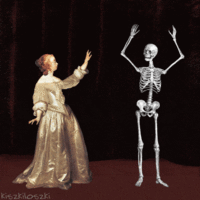More about The Magic Circle

Contributor
J.W. Waterhouse had a thing for a women who could put him under a spell- literally.
Waterhouse loved to paint enchantingly beautiful women in nature via the Pre-Raphaelite style. He often depicted witches, goddesses, and other magical women not as fearfully evil creatures but as powerful forces to be reckoned with. Waterhouse’s formal artistic training and the social environment of 19th century England exposed him to various cultures that influenced his love and portrayal of witches.
At the time it was trendy to express interest in the exotic and the occult, both of which you can see here in The Magic Circle. The woman’s skin tone and facial features suggest she’s of Middle-Eastern origin, but her hair is styled in Anglo-Saxon braids and her dress features Greek art. This fashionable witch is also wearing what appears to be a snake eating its own tail, an ouroboros, around her neck. This is one of the oldest mythical symbols, dating back to ancient Egypt, and represents the infinite cycle of life, death, and rebirth.
The magic circle in the ground is a protective barrier against bad hoodoo. Like any good witch, she’s got her tools- a wand to cast the circle and a Wiccan sickle called a boline to cut herbs. The boline’s crescent shape associates the witch with Hecate, Greek goddess of the moon and witchcraft. It looks like our witch is summoning spirits, noted through the abnormal brush patterns jutting out the column of smoke. Back then it was common practice for spiritualists to perform seances and communicate with spirits. #JustWitchyThings
Instead of a black cat, the witch is accompanied by a tiny frog and black birds, either crows or rooks (no, not like the chess piece). These animals are all symbols of evil heavily associated with witchcraft. It’s easy to assume these creature are her familiars -animal guides who assist witches with their magic- but since they aren't allowed within the witch’s protective circle they’re probably not, which implies the witch isn’t evil.
Since Waterhouse chose dull colors in this particular painting, it’s likely the witch is actually a grey/neutral witch who practices neither white nor black magic. Somehow, using murky browns and greys, Waterhouse managed to create a picture full of dynamic energy. The color palette and brush techniques used in the painting were inspired by naturalist painter Jules Bastien-Lepage who was known for his sentimental depiction of rural life.
The Magic Circle debuted at the Exhibition of the Royal Academy in 1886 where it was met with critical acclaim for its originality and beauty. After a vote of 7-3, the Chantrey Bequest bought the painting for £650- roughly $110,000 today! These days The Magic Circle is a favorite of modern witches who store potions in mason jars and use bullet journals for their grimoires. We’re sure if you conjured up the spirit of J.W. these days, he’d be delighted you share his interest in the occult and magical women. Blessed be!
Sources
- Dani Cavallaro, J.W Waterhouse and the Magic of Color (North Carolina: McFarland and Company, Inc: 2017), 173.
- Frances Fowle, “The Magic Circle,” Tate Gallery, December 2000, http://www.tate.org.uk/art/artworks/waterhouse-the-magic-circle-n01572.
- Anthony Hobson, J W Waterhouse (London: Phaidon Press, 1994), 37.
- Peter Trippi, J.W Waterhouse: The Modern Pre-Raphaelite (London: Royal Academy of Arts, 2008), 38.












